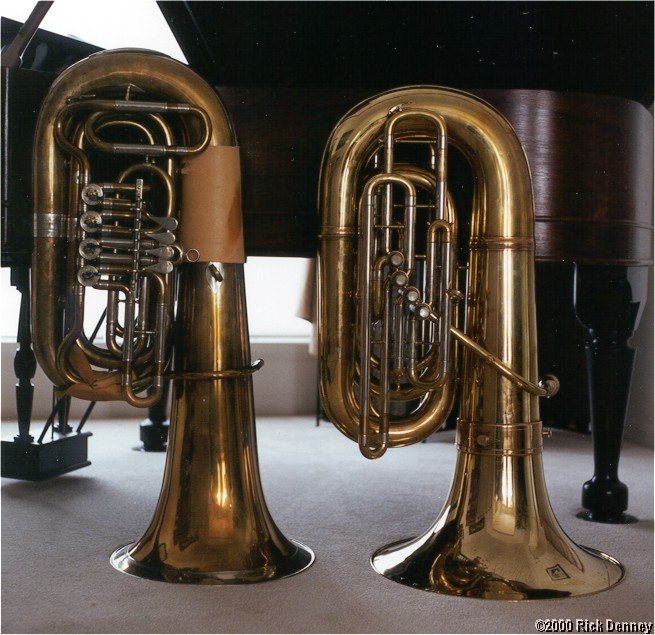
Posted by Rick Denney on June 14, 2002 at 11:01:18:
In Reply to: Re: Re: Re: Just noticed on St. Pete posted by John Swensen on June 13, 2002 at 20:17:24:

Yes, the St. Petersburg isn't a particularly tall instrument. But if you look at the taper in the last three or four feet of the instrument, it has the fast taper and large throat associated with the rotary designs. The American design starts its taper much closer to the mouthpiece, which gives it a larger bottom bow. The taper in the bell stack leading up to the throat is less.
For example, a Cerveny Piggy, short though it is, is still an example of the tall-bell design. It's a design issue, not how the instrument looks from a distance. The label "tall bell" is just a handle to describe it in the absence of a better handle.
The key element is the shape of the bell. If you look at the photo above, you'll see that the curvature of the of the bell goes from a basically straight taper to a fast spiral that reaches the edge of the bell quickly. The York's bell curve is more circular. That's why I use the "exponential" and "bi-radial" terms that are used in the loudspeaker business. It seems to me that the shape of the curve is much more important than where the curve of the bottom bow happens to begin. If you took the Miraphone and shortened the bell stack, you'd push more tubing around the outer wrap to the top bow. Both those bows would be bigger. The tuba would have the same taper, though, of course, and the same general characteristics. Of course, the position of the bows in the bugle does make a difference, but I suspect that is much more subtle than the shape of the bell stack.
As Ken Sloan would say, this is barely beyond the arm-waving point with me. Call it a working theory with no mathematical support. But it's the one characteristic that seems consistently different between the horns with the American style and the German style, and I can often predict in very broad terms how a horn will sound by observing the starting point of the taper and the shape of the bell stack.
I am becoming more and more persuaded that the shape of the bell and the resulting propagation has a greater effect on the horn's sound out front than on other aspects apparent to the player while he is playing. That's why I'm so excited about the new Conn F tuba prototype--it has the basic taper design of my beloved Yamaha 621, but a wide, radial bell that I think will give the sound more richness in most performance spaces. But the Yamaha, like an old Miraphone and other rotary tubas of that classic shape, works amazingly well outdoors and in beer tents where it has to compete with high ambient noise levels.
Rick "trying to make sense of experience and observation" Denney